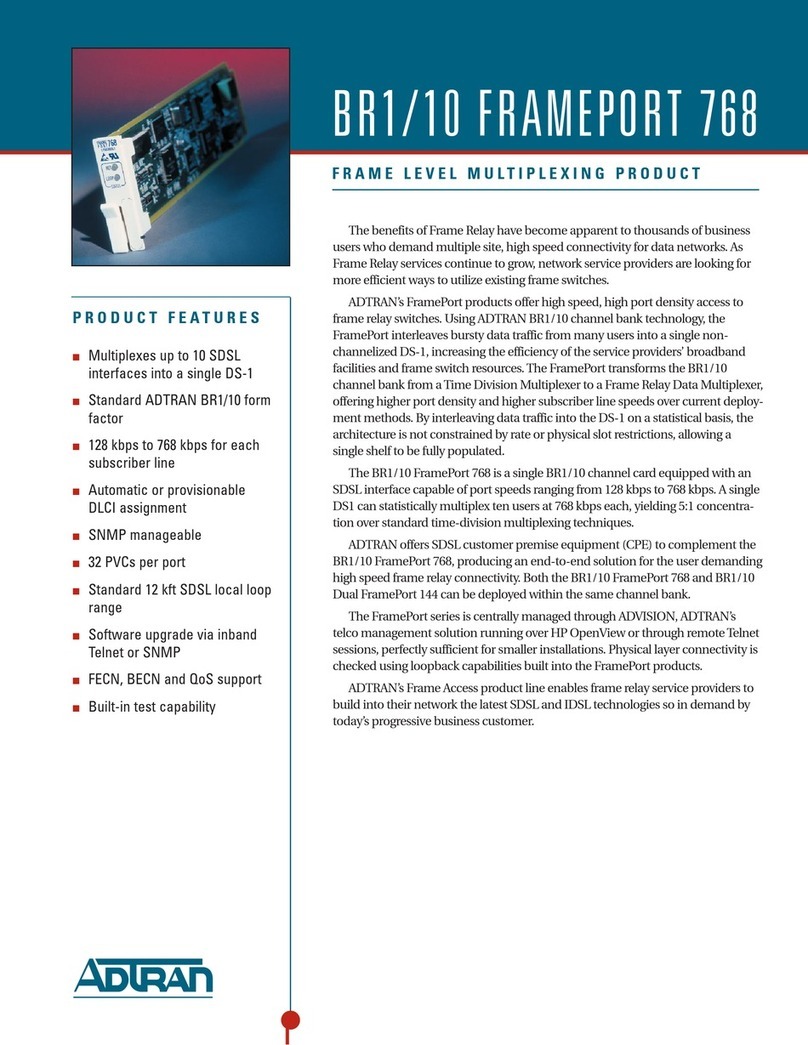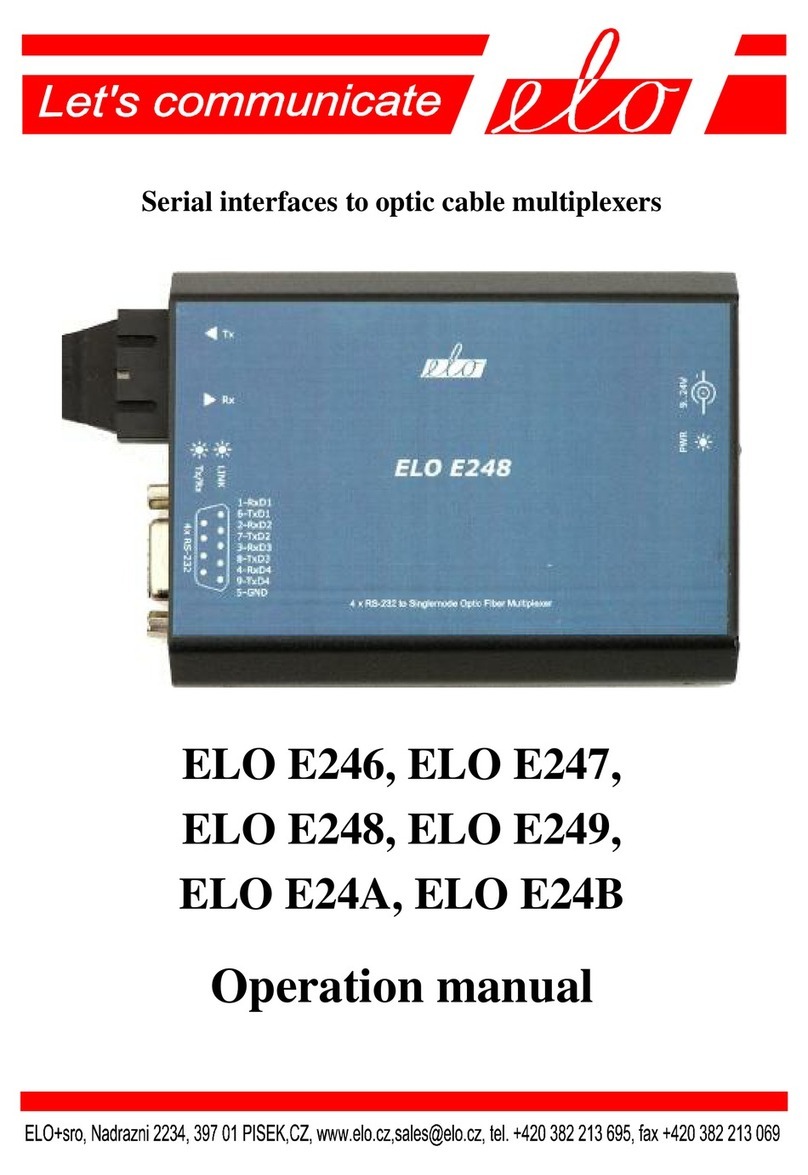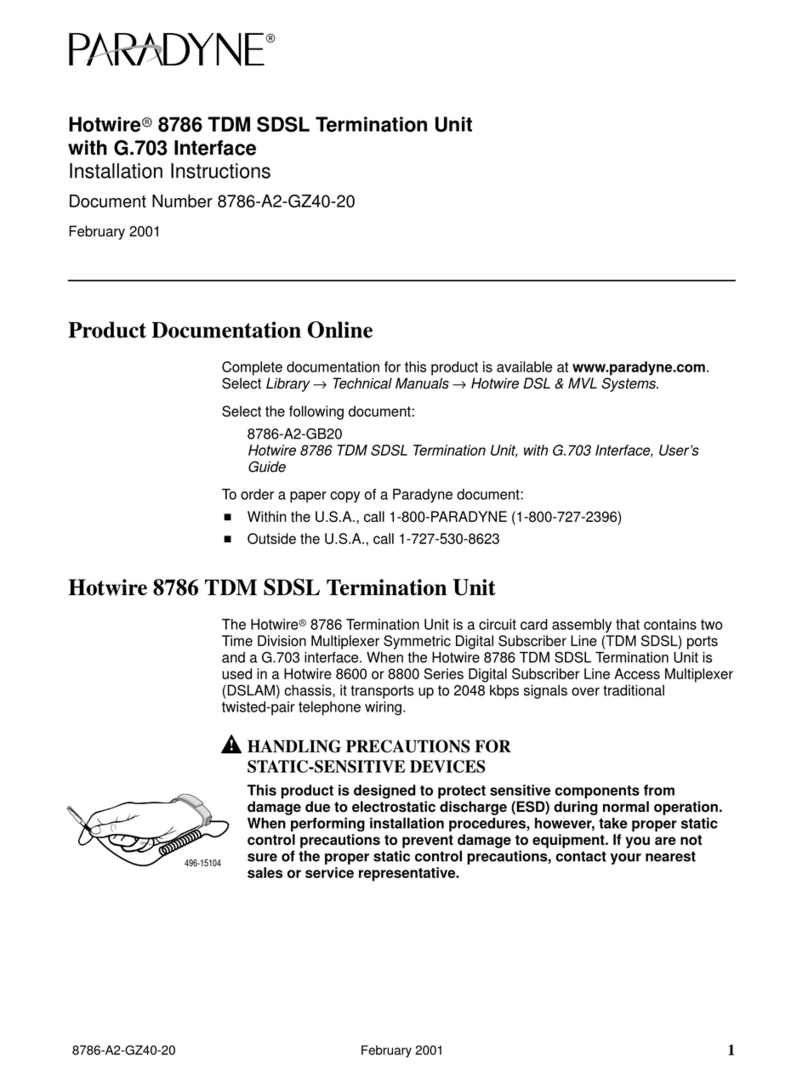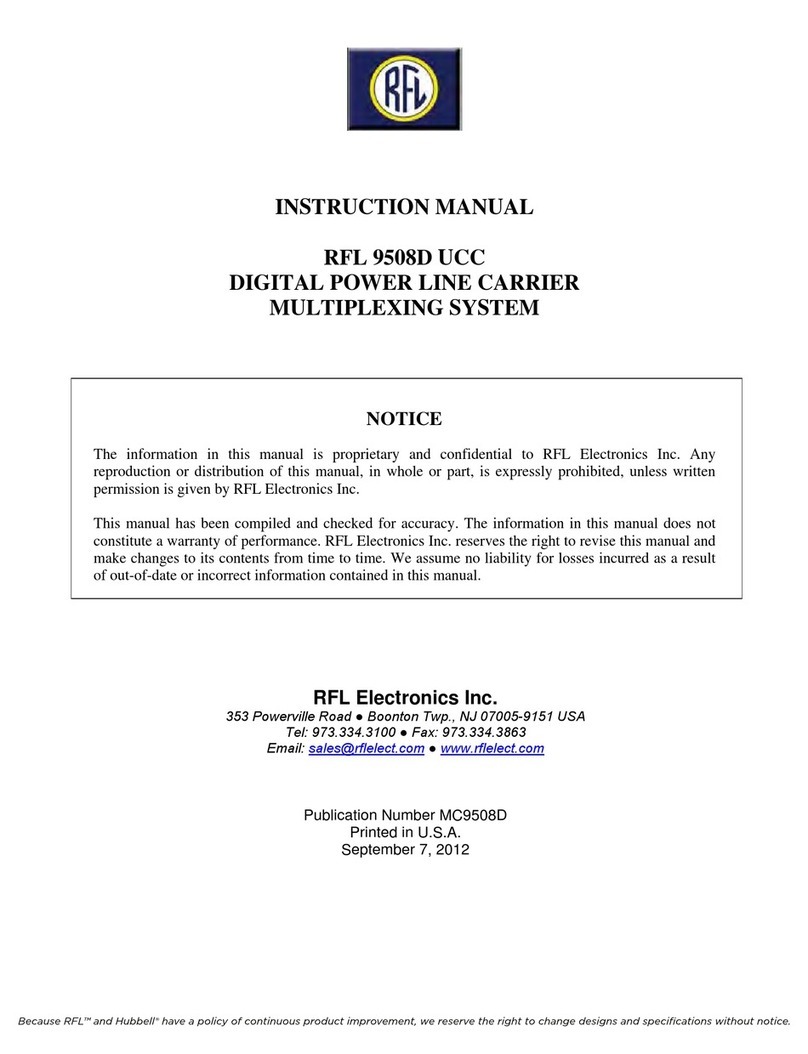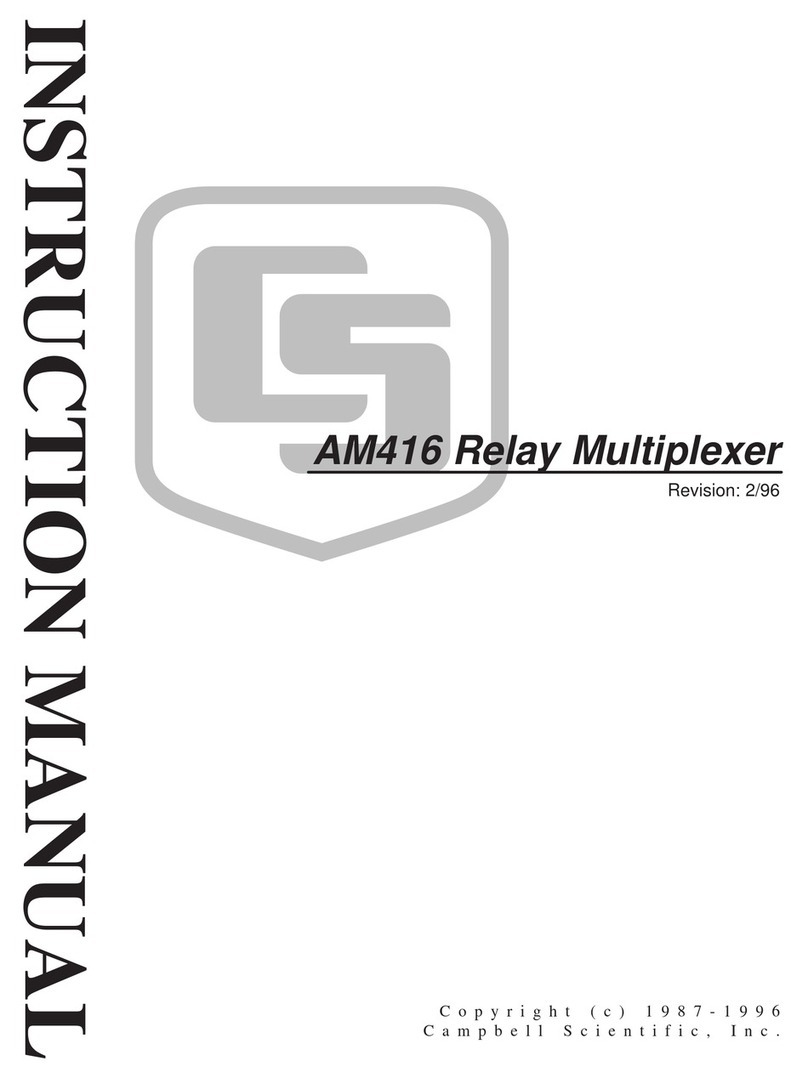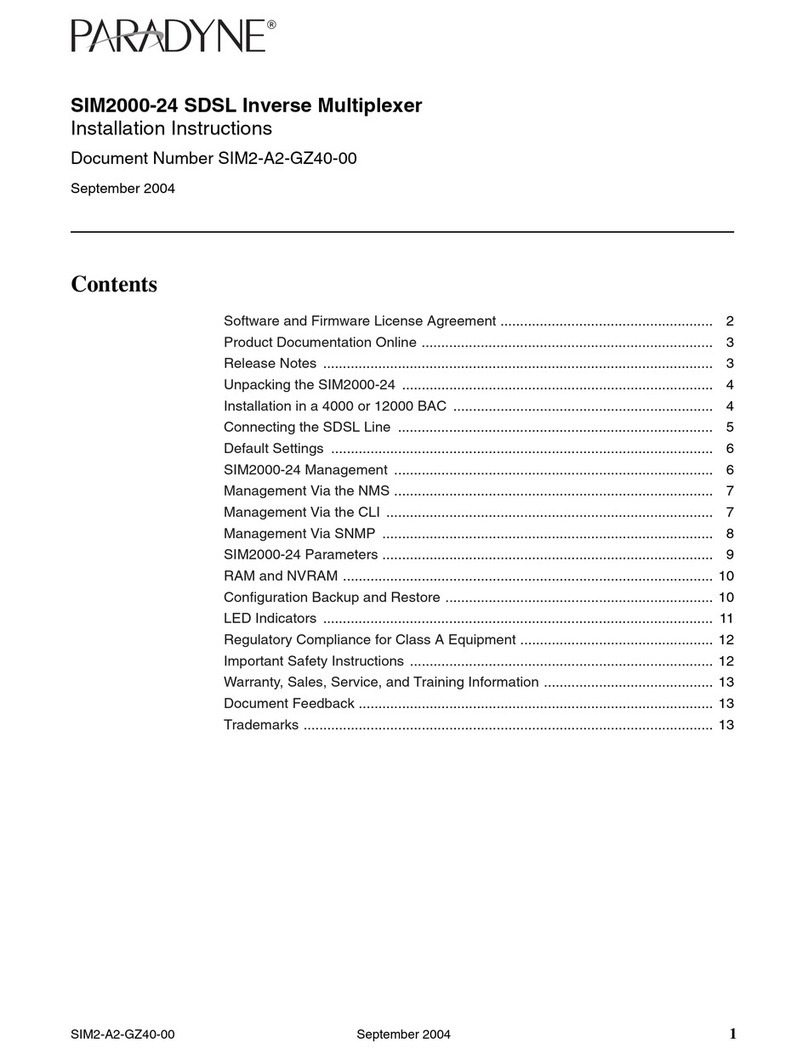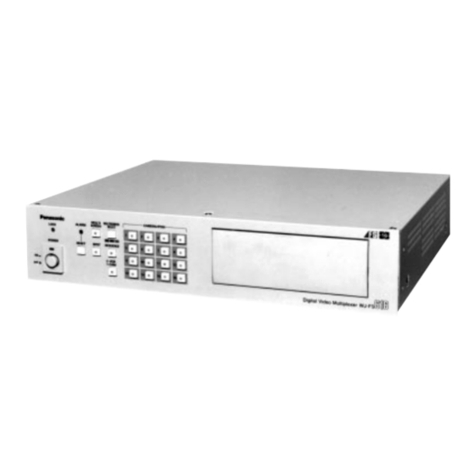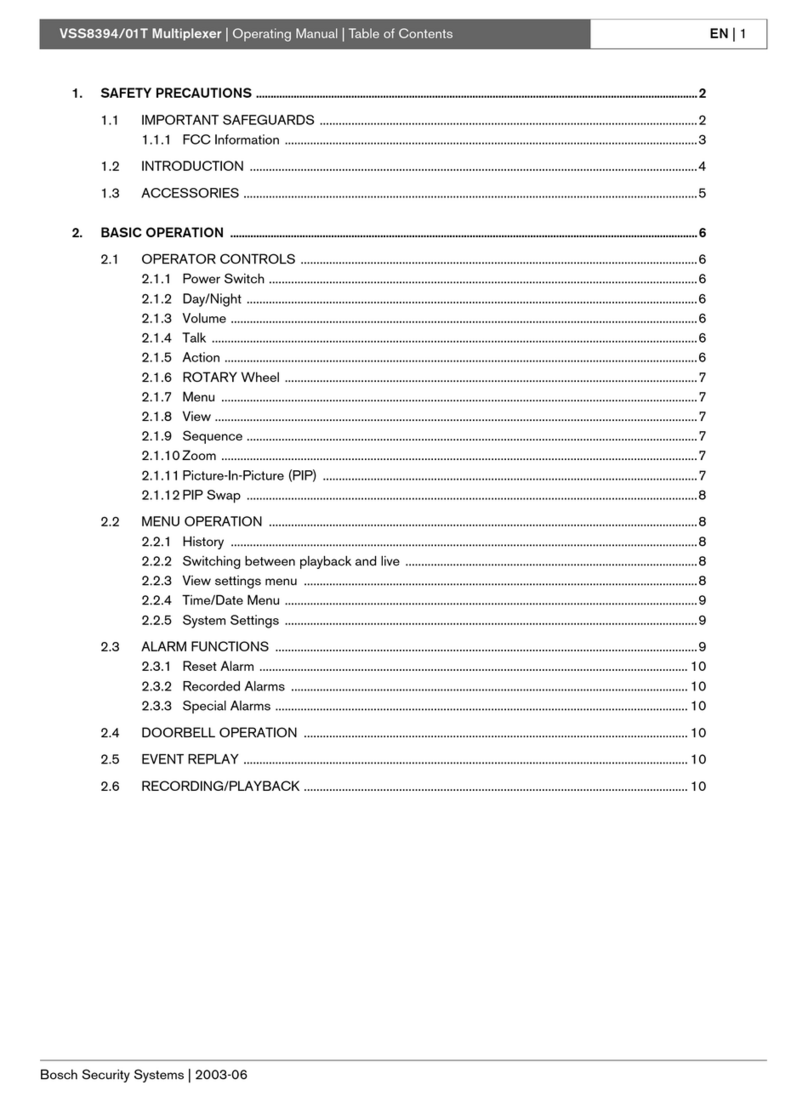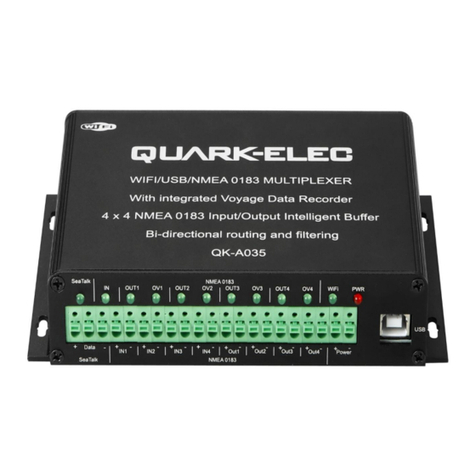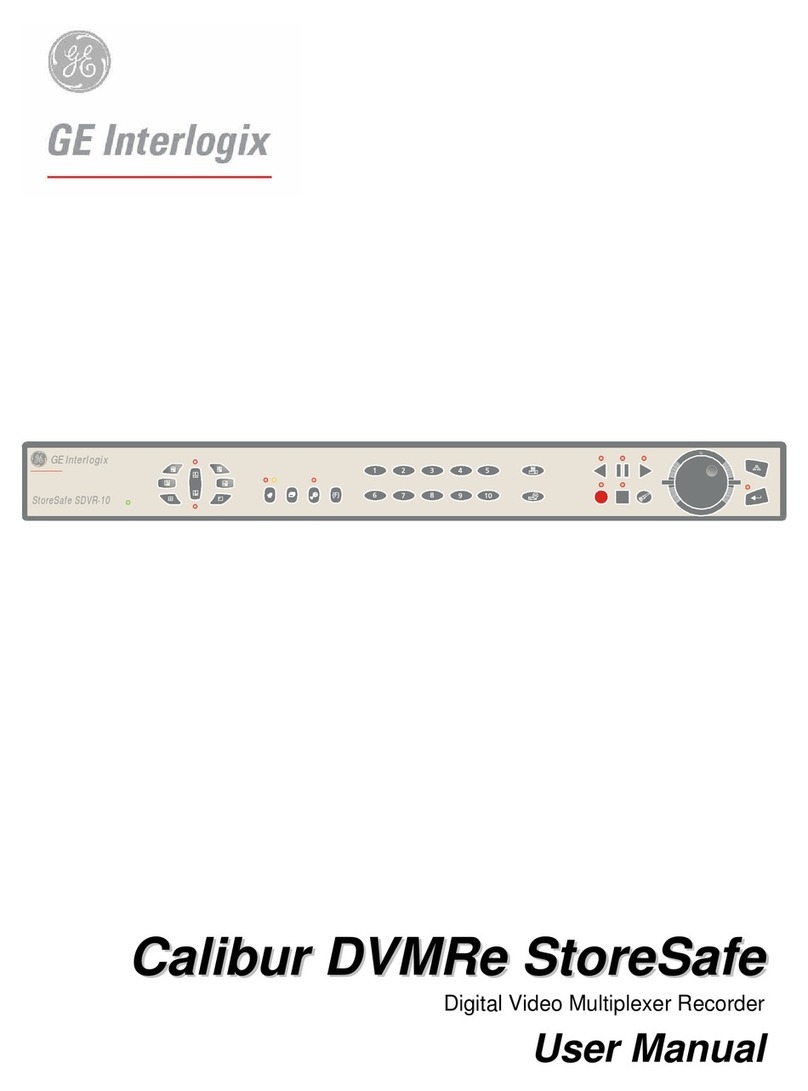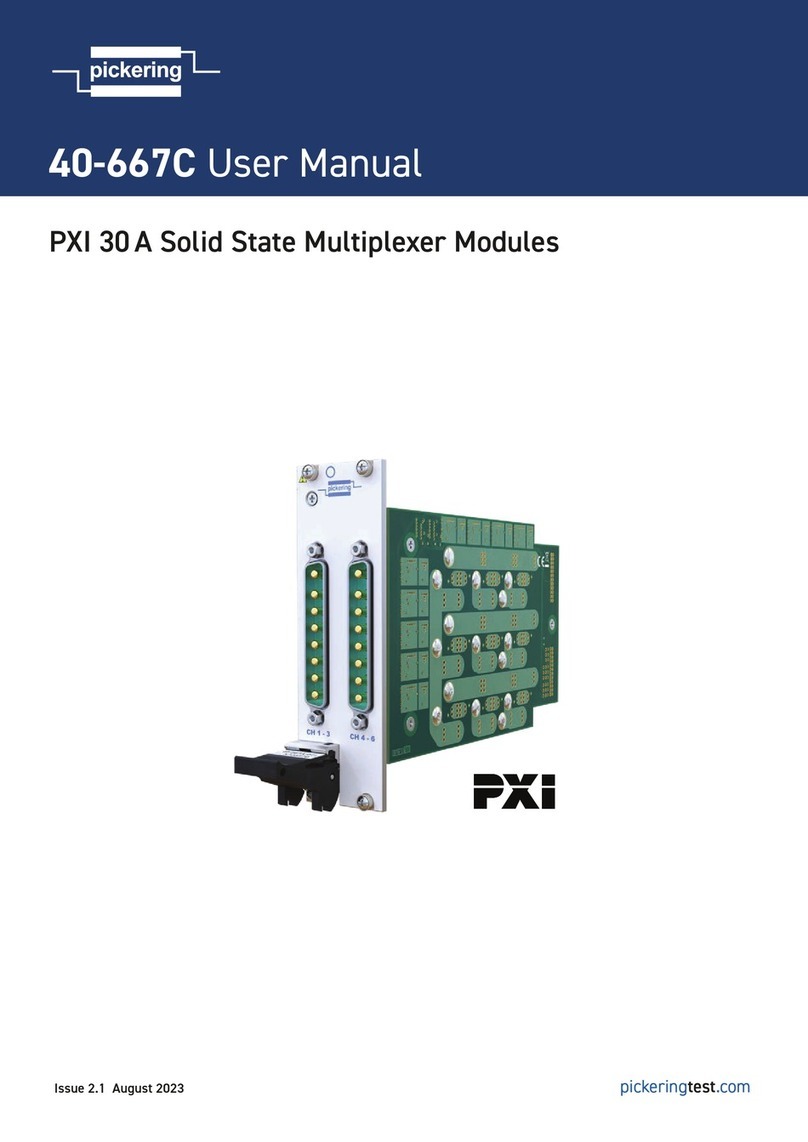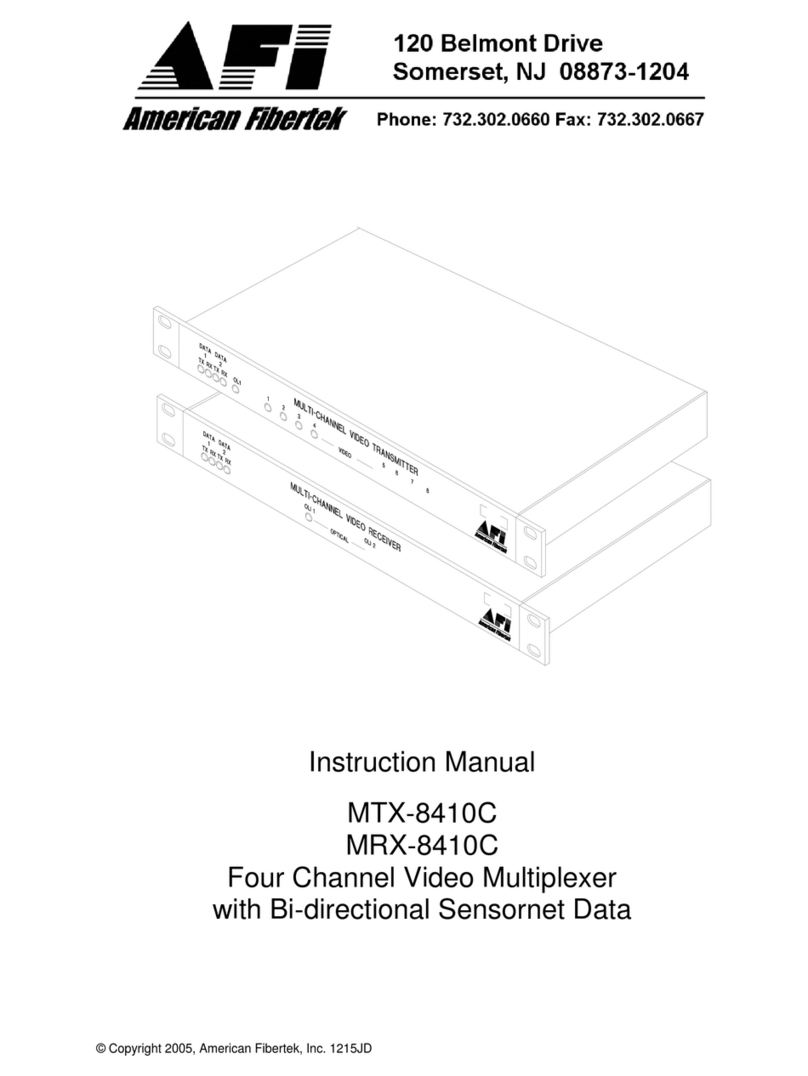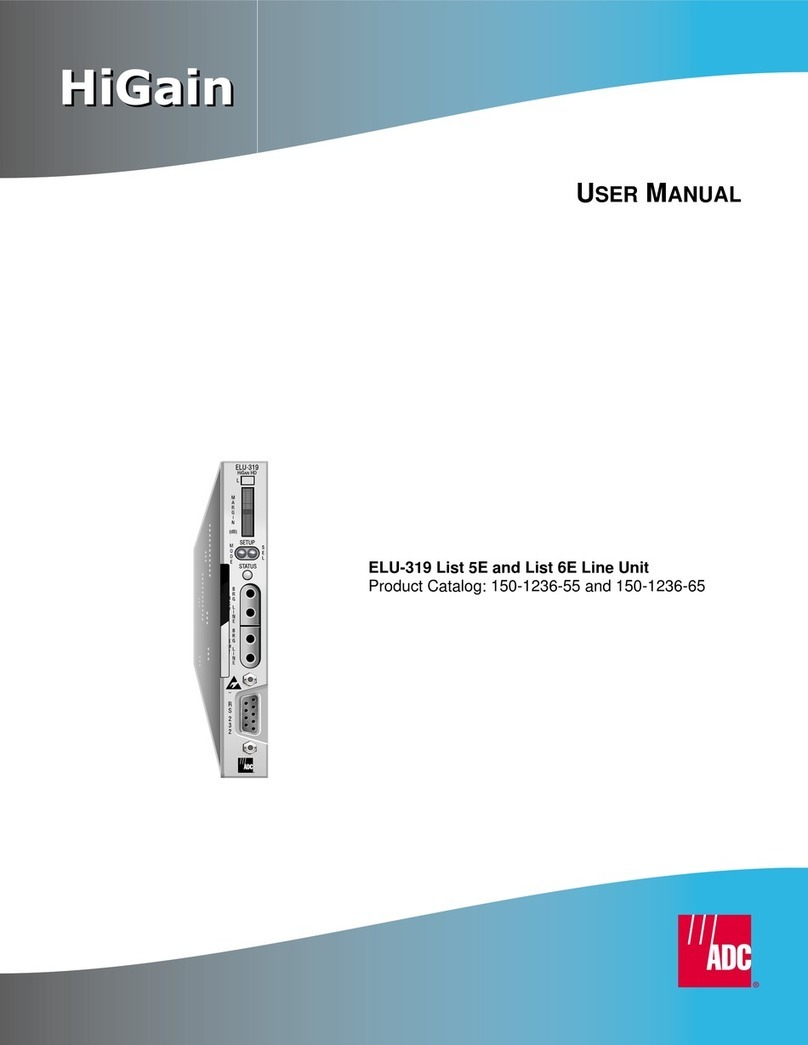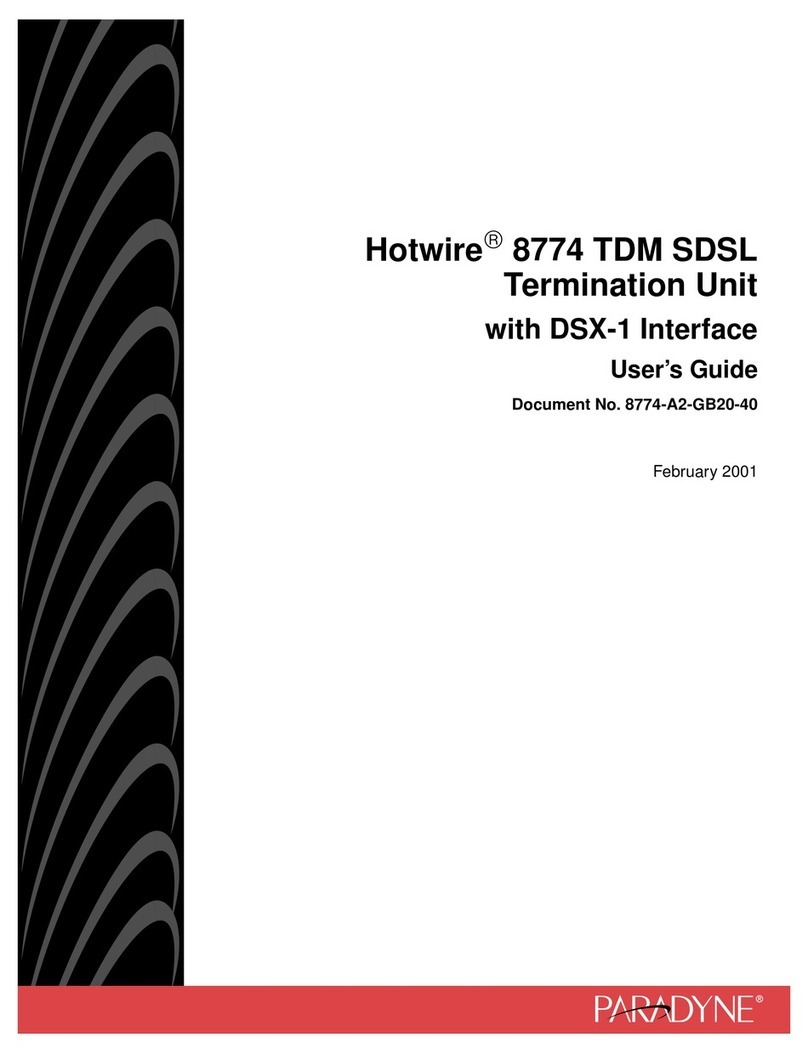
4
1.3. Functional Description
A block diagram of the CLM-601 is provided in Figure 1-1. The CLM-601 interfaces up-
to four base configuration Camera LinkTM cameras to one frame grabber using standard
Camera LinkTM cables. This capability supports applications requiring the ability to select
between multiple cameras.
The cameras, denoted A/B/C/D, connect to the front of the CLM-601, and the frame
grabber connects to the rear. The camera selection method is determined by the Camera
Select switch located on the rear panel. The camera selection options are:
•Camera LinkTM serial port messages
•Camera LinkTM Camera Control signals (CC1/CC2 or CC3/CC4)
•External RS-232 serial port messages
•Fixed selection (A,B,C, or D)
When serial communication (Camera LinkTM or RS-232) is used to select the camera, the
data rate is specified via the rear panel baud rate switch.. The baud switch enables the user
to operate the CLM-601 at the same data rate as the camera, so camera and CLM-601
control messages can be combined on the same serial link. More details are provided in
Section 1.4.3.
LED camera select indicators are located next to the camera connectors to identify the
current camera selection.
Multiple CLM-601s may be cascaded to support more than four cameras. Medium
configuration cameras can be supported using two CLM-601s.
The CLM-601 camera and frame grabber interfaces incorporate the connector, signals,
pinout, and chipset in compliance with the Camera LinkTM specification. The CLM-601
incorporates the “base” (single cable) configuration signal set, consisting of video data,
camera control, and serial communications. The CLM-601 incorporates high-speed (85
MHz) interfaces and supports any base configuration camera.
The CLM-601 Camera LinkTM Multiplexer is housed in a sturdy, compact aluminum
enclosure and is well suited for industrial and OEM applications.
The CLM-601 is powered by an external wall plug-in power supply (optional). A null
modem cable for use with the RS-232 port is included.
